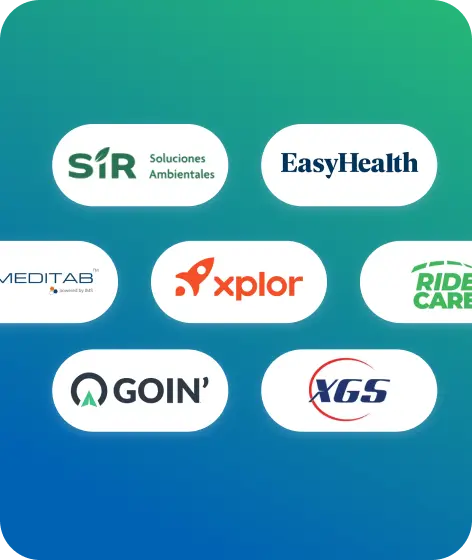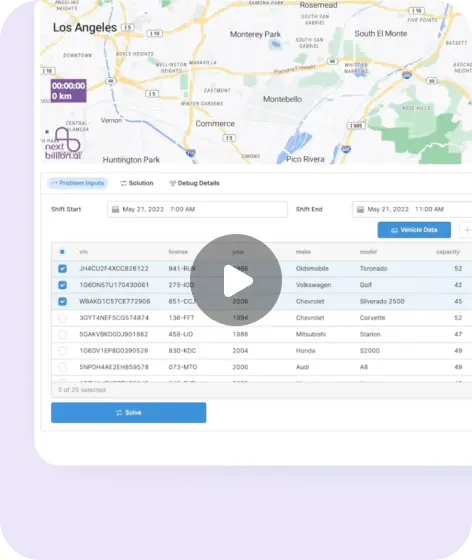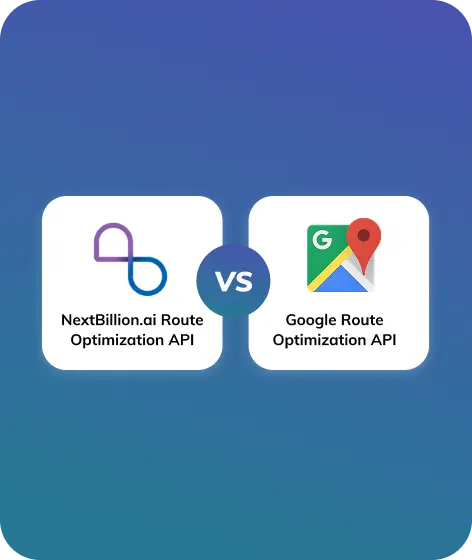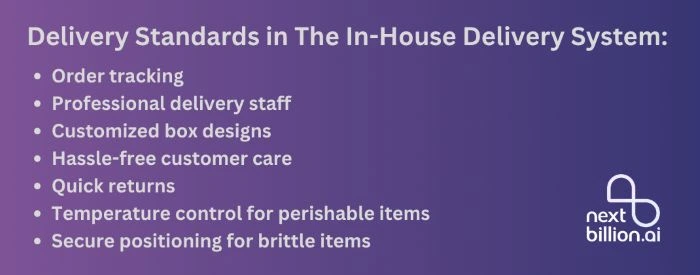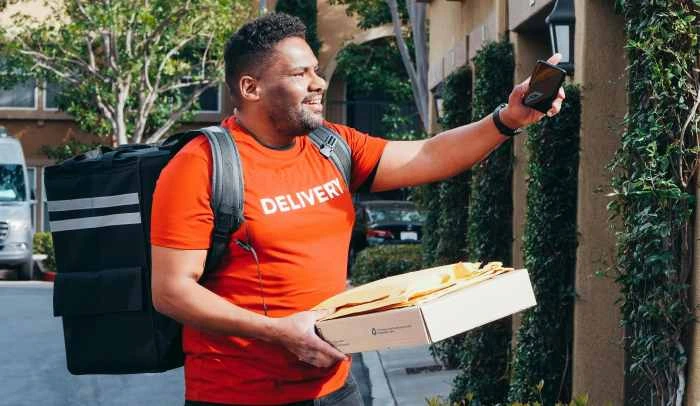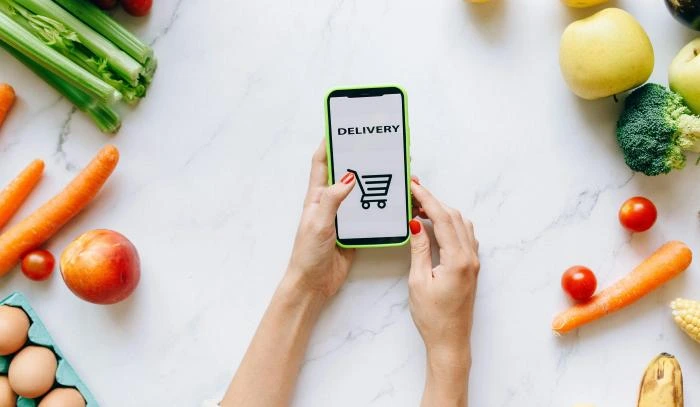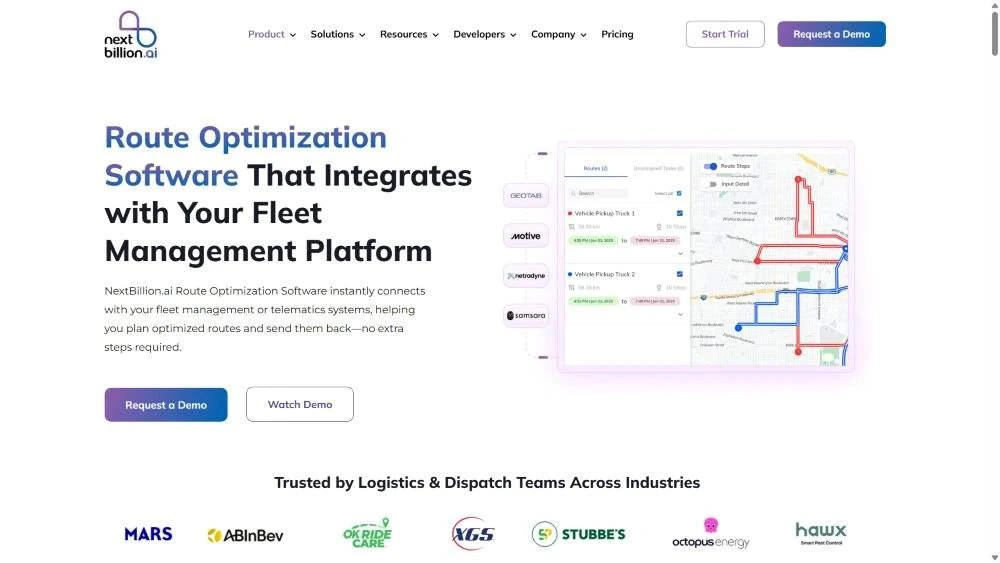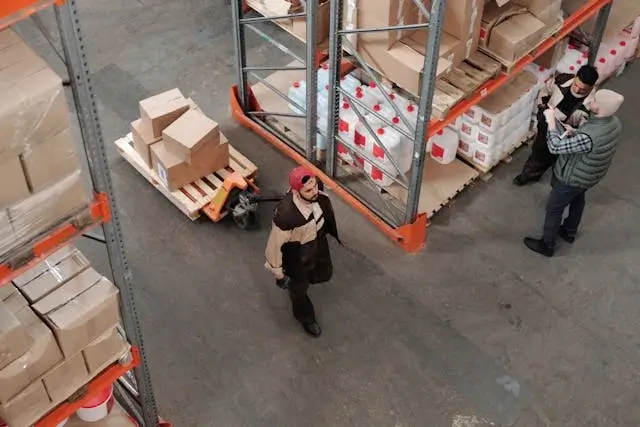
Table of Contents
The concept of an in-house delivery system is all about self-managing the delivery procedures without external interventions. The companies that are manufacturing or selling the products install and manage the logistics and transport system to reach the buyers.
Here the producers, manufacturers, and marketers do not outsource the transit services to a third party like courier or shipment firms. Instead, the seller arranges everything from employing delivery staff to deploying transit vehicles and dispatch fulfillment.
In-house delivery is a distinct domain, typically unrelated to the core operations of any goods production company. And that is why sellers find it more suitable to transfer the responsibility of reaching their buyers to a consignment delivery service.
Transit staff and delivery vans alone cannot accomplish this task. Other resources like software systems and route planners are extremely helpful for successful and efficient task completion.
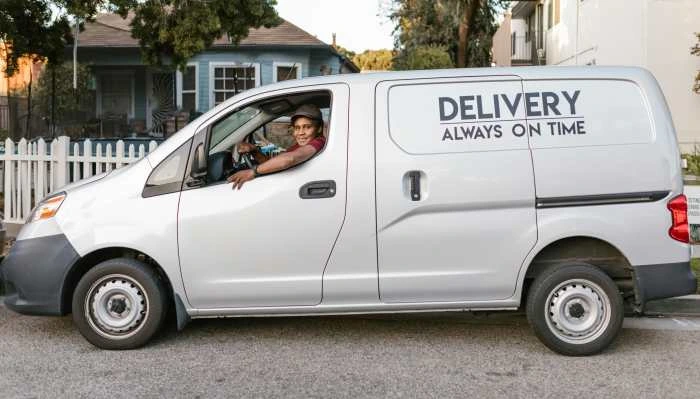
While product quality is uncompromisable, it is also necessary to uphold the customer’s experience in the complete sales cycle. And deliveries play an integral part in building the company’s impression among the buyers as they reach the location.
Depending on the business category—such as groceries, restaurants, or any other segment that serves customers at various locations— the in-house delivery system can be a game changer.
It is essential for business hubs to understand the process of in-house deliveries and its potential in enhancing brand identity while being a cost-effective solution.
Also read: Ten delivery business ideas to consider in 2025.
Why is Delivery Management so Important?
Business experts and investment groups emphasize creating premium delivery experiences for the customers making online purchases. Because the trouble in receiving the products, considering their safety, intactness, and timespan, would dismay the buyers from visiting again.
The battle is half won when the potential customers are convinced with the deal. But it is a complete loss when they talk more about the bad delivery services and praise less the product’s quality. Even regular buyers begin to look for alternatives to your products, after troubled delivery experience.
Ipsos and Octopia (global market research and eCommerce solution firms) have recently published a survey report on customers’ online shopping and delivery experiences. It says that 85% of the shoppers turn away from brands and retailers due to their poor delivery experiences.
A retail shop served free home deliveries within 30 minutes for two consecutive decades in the nearby localities. The service earned them the bulk of their customers and expansion of the shop.
But eventually, after the seasonal discount and festive offers, their sales graph fell down. The reason was mismanagement of online orders with unfulfilled deliveries or broken boxes. It was due to a lack of investment in the automation system and outsourcing long-distance orders to an unreliable third-party agency.
The story isn’t about one particular store. Many entrepreneurs or decades-old shop owners are more focused on the items in the store and pay less attention to the customer’s experience during the product’s delivery stage. And despite efforts at quality maintenance, you create a negative impression on your buyers.
It is a resourceful and interconnected quarter of the century, where you cannot abstain from serving high-standard delivery experiences to the customers.
Brief Explanation of In-House Delivery System
Product delivery to the customer’s preferred location is a part of business promotion rather than just a free or paid service. Therefore, it is necessary to ensure that there are sequential procedures in place for receiving orders, maintaining the database, dispatching the packages, and final delivery. As an obvious part, the system requires skilled team managers, drivers, and delivery vehicles.
Business organizations often find it hectic and tedious to keep track of orders and successful deliveries, so they plan to outsource the job to the agencies working in the logistics and transport segments.
But there are quite a significant number of companies in e-commerce, food, retail, and other sectors that invest in resourcing the deliveries through their self-managed mechanism. We refer to this as an in-house delivery system. These companies maintain full control over their delivery operations, which provides multiple benefits such as improved profit margins and enhanced branding.
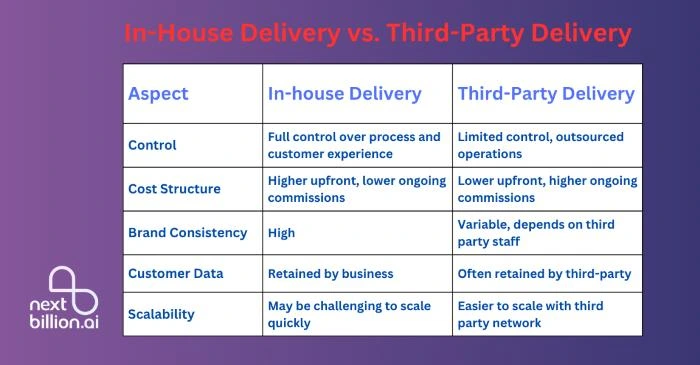
Advantages of In-House Delivery Services
There are multiple perspectives on choosing the in-house delivery services over outsourcing the job to a logistics company. While it requires greater accountability and resourcefulness, there are innumerable benefits to installing and initiating the in-house delivery system.
Read the comparative analysis with pros and cons of in-house delivery system vs third party delivery system.
✔️ Authority: No matter how tedious it seems initially to manage the in-house system, it does give complete control over the business. You can sell your preferred product, oversee delivery operations, and interact directly with customers to enhance their experience. The in-house delivery system allows the business owners to create delivery standards for their departments, such as on-time and safe transit, intact boxes, etc., and can keep track of its implementation.
✔️ Branding: You can leverage the in-house delivery services in enhancing your company’s brand value. The delivery vehicles can display the brand’s logo, and the transit staff can wear unique uniforms that showcase the brand’s image in public spaces without incurring additional expenses. Even box covers can have your company’s name.
✔️ Offers: With an in-house delivery system, the companies are free to create attractive offers on each sale. They can advertise multiple offers on their online portal to attract more buyers. The companies have the independence to develop their sales strategies without encountering any potential objections from a third-party agency.
Companies with in-house delivery systems can create a variety of offers.
✔️ Customer relationship: In-house delivery system creates a mechanism where the customers benefit from a more familiar approach rather than a regular parcel-receiving experience. The companies have the opportunity to establish direct connection with the customers and train the delivery staff to greet the buyers in a friendly manner. Such an arrangement makes the customers feel respected and cared for, which eventually helps in increasing sales.
✔️ Profit margin: When a business venture partners with a courier or logistics agency to fulfill the deliveries, they have to share between 10% and 30% of the profit earned on the sales. There can be other such commission plans as agreed upon by the two organizations for mutual benefit. But the sellers can retain the profit for further growth if they manage to operate their own in-house delivery system successfully.
In the long run, it would become an asset due to a reduction in the total cost price and the opportunity for competitive sales offers that attract more buyers.
Factors That Make In-House Deliveries Challenging
Implementing the in-house delivery system paves the way for long-term benefits, some of which are discussed in the above segment. But enduring the responsibility won’t directly pay back. There are complexities and challenges that need to be addressed to maximize the outcome and run the system with 100% satisfaction for customers as well as the organization.
⭕ Investment in resources: Organizations often back out of investing in in-house delivery after estimating the cost of the resources required to operate the whole mechanism. You need to buy or rent vehicles and modify them, staff uniforms, computer systems and peripherals, Android devices for navigation, software solutions for inventory management and efficient transportation, packaging materials, and other essentials. It is a mandatory expense that the companies need to bear for suitable results and brand recognition.
You may also like to know how to reduce last mile delivery costs using AI technology.
⭕ Staff recruitment: You need to hire delivery agents, vehicle drivers, load managers, dispatchers, operators, and other teammates to manage the in-house delivery department. It may take time to find skilled individuals who learn and work according to the guidelines of the company
⭕ Training and preparations: It is critical to provide proper training to the in-house delivery team, whether working in the field or in the office. They initially need professional assistance to understand the process of logistics handling and transportation systems. The drivers should excel in both driving and repairing common vehicle faults. They should know how to operate navigation tools and take instructions about route plans.
⭕ Transit limitation: The courier companies have hub stations at various locations to distribute the task area-wise. In the same way, the food delivery apps have standpoints for the delivery agents at different zones to collect and deliver the food to the customers. But it may not be feasible in terms of finances for product-selling firms choosing an in-house delivery system. They may not expand their market or target far-off customers with more collection centers or agents.
⭕ Regulatory compliances: Make sure your organization follows the regulatory compliances issued by the state. It is to avoid any issues related to legalities or insurance liabilities of the company.
Is It Worth Investing in In-House Delivery: When Should You Choose It?
It is critical to decide on multiple factors like business type, customers, sales, etc., before concluding on package transportation to the customer.
The purpose of choosing an in-house delivery system is to generate greater returns while keeping complete control over the company’s marketing strategy. But you must do careful analysis about factors like business size, sales volumes, optimum resources with required investment, any long-term goals, etc.
If your business is in the initial stage, such as starting a grocery delivery business, it may not yield profitable returns. For example, a new restaurant requires strong marketing tactics to beat the competition and attract online customers. In such cases, the delivery agents may stay on standby without a task, but you would still have to pay the salary.
But on the other side, businesses opting for in-house delivery can create a brand value with a premium experience for the customers. It sets your brand apart from competitors, ensuring that even with a slow start, people notice and remember your product and brand.
Additionally, it secures the customer’s data, as few third-party delivery agencies may have the policy to share it with the competitors to bag some profit. Brands like Amazon have their in-house delivery system with a global presence. They are to stay for decades, and therefore, outsourcing the delivery tasks may result in lesser offers for the consumers. However, in regions where buyers are less frequent, these companies might collaborate with local courier services for flexible route planning.
Setting Up an Efficient In-House Delivery System: Necessary Resources for Managing Deliveries
The in-house delivery system has a significant role in managing sales strategies. But it comes with certain responsibilities and fundamental arrangements for making things work appropriately and efficiently. Understand the
✨ Delivery vehicles: First thing first! To initiate delivery procedures for your business, you need vehicles that serve the company’s needs. Depending upon the products or delivery types, find suitable transportation modes that are highly feasible to complete the task. For example, grocery stores or restaurant owners can have two-wheelers for swift movements across the narrow lanes, while e-commerce businesses may require delivery vans to carry heavy and bulky loads. These vehicles should have the necessary equipment for safely carrying the parcels.
✨ Software solution: Location technology software is the primary requirement for in-house deliveries. It not only helps in navigating the city, but the built-in route optimization API provides the most suitable routes to finish the task in an appropriate time. A full-fledged tool allows you to track the vehicles, get dispatch alerts, create route plans, and much more.
✨ Trained staff: To manage in-house deliveries, casual multi-tasking teams won’t work in the long run or handle bulk orders. You need well-trained personnel to manage different sections such as warehouse, customer support, dispatch, load management, and most importantly, licensed and trustworthy drivers for your vehicles.
✨ Loading equipment: Depending upon your business type, if you had to manage large and heavy parcels, loading and unloading tools would be required to process the task with ease and safety.
✨ Packaging material: Restaurant owners need to arrange carry bags and delivery bags of special quality that can keep the food safe and are easy to handle for the two-wheel drivers. Similarly, other businesses require packaging boxes in various sizes to effectively accommodate all types of listed products.
✨ Miscellaneous expenses: Finally, you need to make initial arrangements for staff salaries, fuel for delivery vehicles, maintenance of vehicles, software, hardware equipment, and other installations in the warehouse.
How can we Help You in Developing In-House Delivery System?
While you can purchase vehicles or other equipment and hire teammates through consultancy, it is the software integration that matters for managing the tasks efficiently.
NextBillion has more than five years of experience working on location technology and has partnered with global tech giants like Accenture, Persistent, Morphia, and others.
We dedicate our expert talent solely to research and development, constantly updating our AI-enabled Route Optimization API solution. It generates precise results for route plans, load optimization, real-time tracking, vehicle allotment, etc. The tool seamlessly integrates with all the ERP, telematics, or cloud databases to automate the delivery task assignments.
Key Factors That Make NextBillion Stand Out for In-House Delivery Option
We at NextBillion evaluate the pain points of specific business niches and their target audiences. Our advanced route optimization tool with AI technology can systematize the delivery process for the businesses selling products online. It is a multi-faceted software solution that generates clear instructions after efficient analysis of the required parameters.
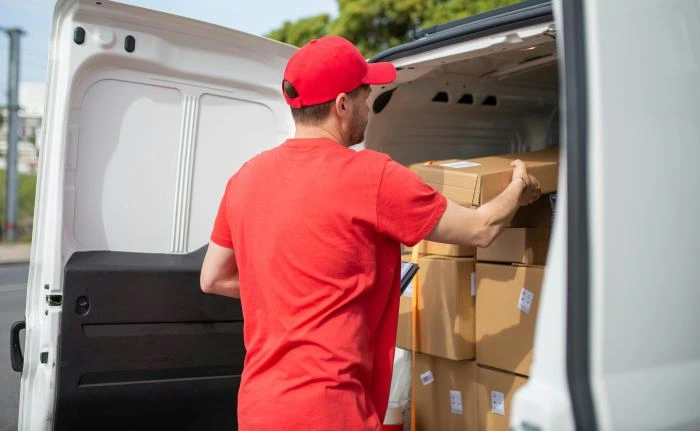
- Quick Integration: You must be using an ERP or database management software to keep track of the product’s sale. Our tool can conveniently integrate with the system to fetch the order details for generating route plans and other further analysis.
- Pay-Per-Call API: We understand your financial limitations considering the amount invested in transitioning to an in-house delivery system. Hence, we have introduced the “pay-per-call” API, a flexible payment model that charges business firms for actual usage of the API instead of a fixed amount. The plan is highly cost-effective, especially for in-house delivery operations with limited tasks.
- Optimal Route Plan: It is an automated tool that takes few seconds for brute examination of the delivery details, such as address, box size, fastest or efficient route, etc. But the service administrators have the power to re-edit the directions to prioritize the order deliveries. Once the changes are added, it will regenerate the route plan considering the alterations.
- Order Batching: The tool creates clusters of orders, considering different constraints like location, box size, type of product, etc. It reduces delivery time and streamlines task assignment with final dispatch.
- Real-time Updates: NextBillion API has the capacity to analyze 50+ constraints together to obtain feasible output in the least possible time. It continuously adds historical data to the panel, including traffic conditions, weather, school timings, and other relevant factors, to prevent sudden traffic issues, roadblocks, and tolls. With its ability to retain and learn the optimization routes, the API considers every new update for further plans.
- Vehicle Allotment: Our tool analyzes the routes, package size, number of packages, time schedules, and all other parameters to allot suitable vehicles for the task. The feature is usually essential for e-commerce or companies with different categories of products on their panel.
- Driver’s app: We have a complimentary mobile app for the drivers on the task. It is among the best navigation and delivery route planner application for the drivers. They can take direct instructions on their Android devices, linked directly to the NextBillion Route Optimization API. It is capable of showing route plans, navigation, route editing, delivery status updates, and other features.
- Task Assessment: Our tool keeps the delivery locations in sequence on the route. This saves time and fuel consumption while creating necessary time windows for the delivery agents when they can take short breaks for snacks or refueling.
- No Overlaps: Our route optimization API ensures that no two route plans overlap each other until it becomes necessary for product delivery or route limitations. The geofencing feature helps in the effective utilization of the staff’s duty hours and saves fuel consumption.
- Maintenance Alert: Our tool keeps track of the vehicle’s movements for task completion. Additionally, it documents the nature of the breakdown and the methods used for its repair. It then sends regular maintenance alerts for each vehicle, and the same for other equipment.
- Live Tracking: NextBillion Route Optimization API provides real-time information about the traffic, weather, or movement of the vehicle in the region. It accumulates these details to reassess the route plan and alerts for any hindrances. The tool also notifies the managers when the vehicle deviates from the route for any reason.
- High Accuracy: The tool works precisely to fetch data and spots accurate location with upto one meter. It works in real-time as well as in offline mode for best results in low connectivity area.
- Load Management: Nextbillion API gets integrated with the company’s database for capacity planning. It accesses the orders, available resources, and other useful information to generate assignments.
- Wage Calculation: It is suitable for calculating compensation for gig workers linked with your company’s in-house delivery process. The tool regulates the total hours devoted by an individual to ETAs and travel distances and accurately evaluates the amount to be paid for their services.
- Proof of Delivery: The feature keeps a transparency between the delivery agent, customer, and the dispatch manager. It allows the agent to get a signature as delivery proof from the customer and updates the managers about the task completion. This simple exercise enhances the company’s credibility by demonstrating their commitment to reaching customers and improving the delivery experience.
Key Takeaways
Initially, the in-house delivery system may cause financial turbulence, but over time, potential buyers will begin to recognize your business. You get the liberty to extract more profit from the sales. On the other hand, there is a vast possibility to create seasonal discount offers, since your business is saving on the commissions that were going to the third-party delivery providers.
With the NextBillion Route Optimization API, you can precisely manage the delivery operations by streamlining the resources. The API is highly efficient in assisting drivers with route planning and enabling them to complete deliveries using the fastest possible routes. We guarantee value for money and allow you to select a pay-per-call payment option if it aligns with your business strategy during periods of lower sales.
About Author
Nitesh Malviya
Nitesh Malviya is a research-oriented professional with a background in Computer Science & Engineering. He served for 7 years as a software consultant and wrote passively in the tech niche before becoming a full-time technical writer.

